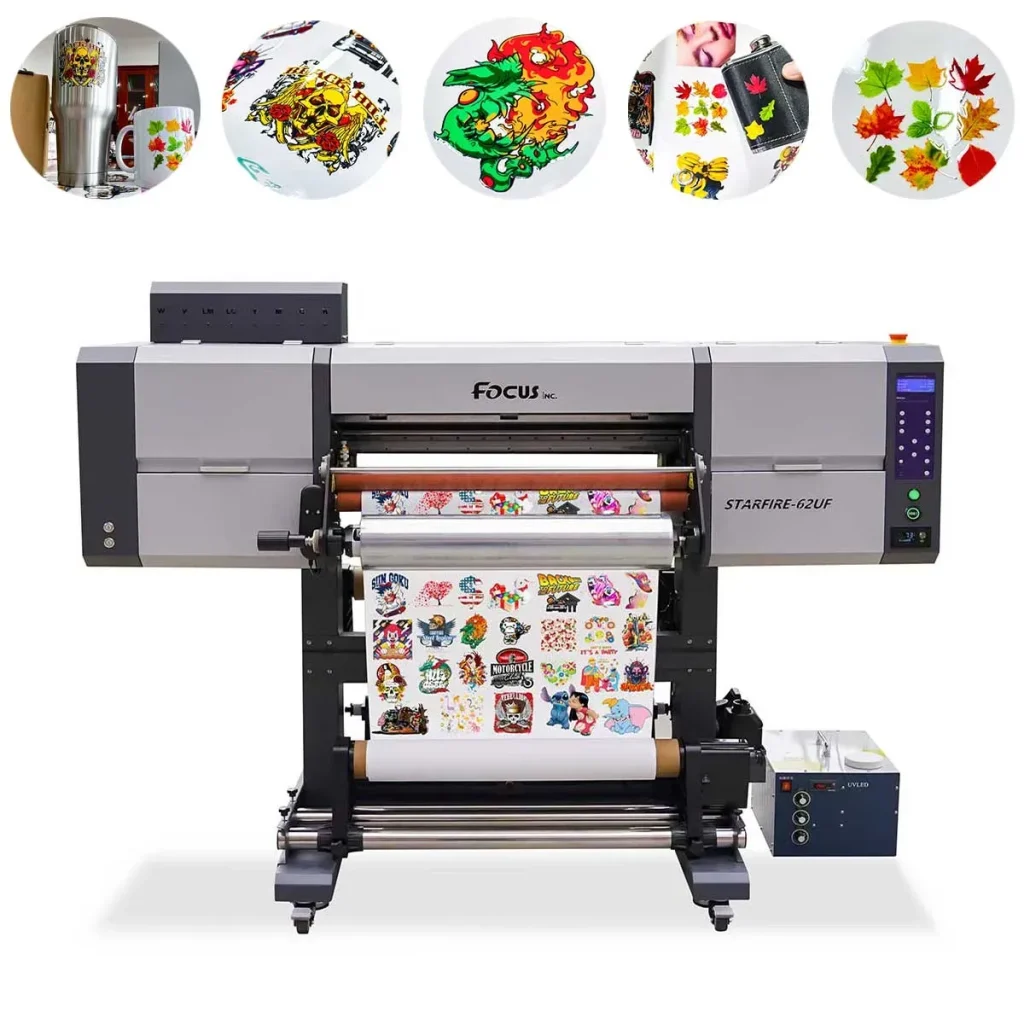UV DTF Gangheet Printing is a groundbreaking technique that is revolutionizing the world of commercial printing by merging the capabilities of UV printing and direct-to-film (DTF) printing. This innovative hybrid printing technology allows for the creation of vibrant, high-resolution prints that are not only durable but also incredibly versatile, suitable for a wide range of substrates. As sustainable printing continues to gain importance in the industry, UV DTF Gangheet Printing stands out by utilizing eco-friendly UV inks that cure quickly and efficiently. With its exceptional print quality and quick turnaround times, this process positions itself as an ideal solution for businesses looking to meet the demands of today’s market. Discover how this advanced method can elevate your printing projects and enhance your product offerings while embracing sustainability.
Exploring new frontiers in printing technologies, UV DTF Gangheet Printing serves as a testament to the potential of modern techniques that combine ultraviolet printing and direct-to-film applications. This unique process harnesses the strengths of hybrid methods, resulting in images with striking clarity and durability across various materials. As the printing landscape evolves, terms like UV ink technology and direct-to-film applications highlight the sophistication of these methods. Businesses and creators are increasingly drawn to solutions that promise not only high-quality outputs but also environmentally sustainable practices in their production processes. The future of commercial and sustainable printing will surely be shaped by innovations like UV DTF Gangheet Printing.
Exploring the Basics of UV and DTF Printing Technologies
UV DTF Gangheet printing encompasses a blend of UV and DTF technologies, both of which cater to various artistic and commercial needs. UV printing utilizes ultraviolet light to cure inks instantly, allowing for rapid production while ensuring the vibrancy and durability of prints. On the other hand, DTF printing provides remarkable flexibility, enabling high-quality transfers on a wide range of fabrics through heat application. Together, these methods create unique printing processes that redefine the possibilities within the industry.
The significance of understanding each method’s fundamentals cannot be overstated. UV printing is especially beneficial for businesses looking to broaden their product offerings, as it can print on materials like glass, wood, and various plastics. Conversely, the DTF process shines in the apparel and textile sectors, where intricate designs on fabrics require superior detail and washability. Thus, knowing both technologies helps businesses select suitable printing methods based on their specific needs.
Frequently Asked Questions
What is UV DTF Gangheet printing and how does it differ from traditional UV printing?
UV DTF Gangheet printing combines ultraviolet (UV) printing technology with direct-to-film (DTF) printing processes. Unlike traditional UV printing, which solely focuses on curing inks with ultraviolet light on various materials, UV DTF printing utilizes DTF methods to create transfers that provide enhanced durability and versatile applications on fabrics and other surfaces.
What substrates can be used with UV DTF Gangheet printing?
UV DTF Gangheet printing can be applied to a wide range of substrates, including textiles, plastics, glass, wood, and metals. This versatility positions it as a strong option for commercial printing needs across diverse industries, blending the capabilities of UV and DTF technologies.
How does UV DTF GangHEET printing contribute to sustainable printing practices?
UV DTF Gangheet printing adheres to sustainable printing practices by utilizing eco-friendly UV inks that reduce waste and harmful emissions. As the printing industry places increasing emphasis on sustainability, this hybrid technology aims to meet market demands while promoting environmentally responsible production methods.
What advantages does DTF printing bring to the UV DTF Gangheet printing process?
DTF printing enhances the UV DTF Gangheet printing process by enabling high-quality color reproduction and detailed designs on various fabric types. This compatibility allows for innovative applications in fashion and merchandising, expanding the creative possibilities available to businesses.
Why is UV DTF Gangheet printing considered a breakthrough in hybrid printing technologies?
UV DTF Gangheet printing is seen as a breakthrough in hybrid printing technologies due to its ability to marry the high-speed efficiency and durability of UV inks with the versatility of DTF applications. This combination not only speeds up production but also broadens the types of substrates that can be printed effectively.
Can UV DTF Gangheet printing meet the demands of fast-paced commercial printing?
Absolutely! UV DTF Gangheet printing is designed to meet the demands of fast-paced commercial printing environments. Its quick curing process and ability to produce high-quality prints on various materials allow businesses to enhance workflow efficiency while maintaining exceptional print quality.
| Key Point | Details |
|---|---|
| What is UV Printing? | A printing process using ultraviolet light to cure inks as they are printed, resulting in vibrant colors and fast drying times. |
| Advantages of UV Printing | Versatility, vibrant colors, and exceptional durability make it suitable for various materials and conditions. |
| What is DTF Printing? | A newer method that transfers designs printed onto a film to fabric using heat, known for its quality and durability. |
| Advantages of DTF Printing | Offers high-quality prints on diverse fabrics, with cost-effectiveness. |
| UV DTF Gangheet Printing | Combines UV and DTF methods using UV inks, providing enhanced durability and faster production. |
| Potential Developments | Focus on hybrid technology, sustainable inks, and customization options to meet consumer demand. |
Summary
UV DTF Gangheet Printing represents a cutting-edge advancement in the printing sector, merging the innovative techniques of ultraviolet (UV) and direct-to-film (DTF) printing. This hybrid process leverages the speed and durability of UV inks in the DTF application, setting a new standard for print quality and efficiency. The ability to produce vibrant and high-resolution designs on various substrates not only enhances the versatility of printed products but also caters to the growing demand for sustainable and customizable solutions. As the technology continues to evolve, it shows great promise for further developments in the printing industry.



